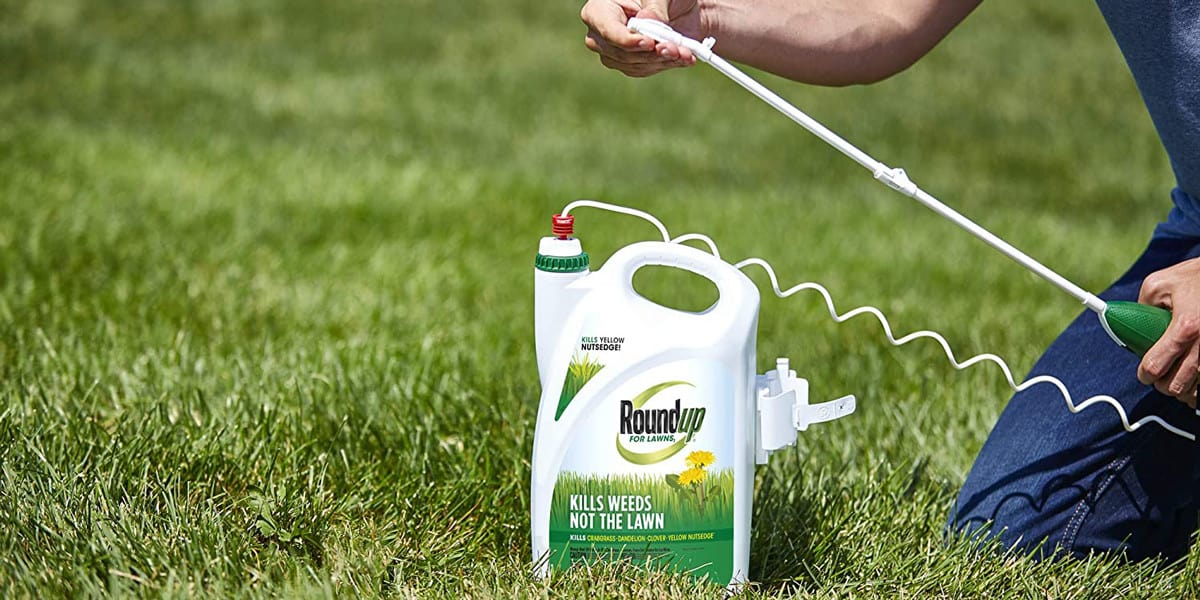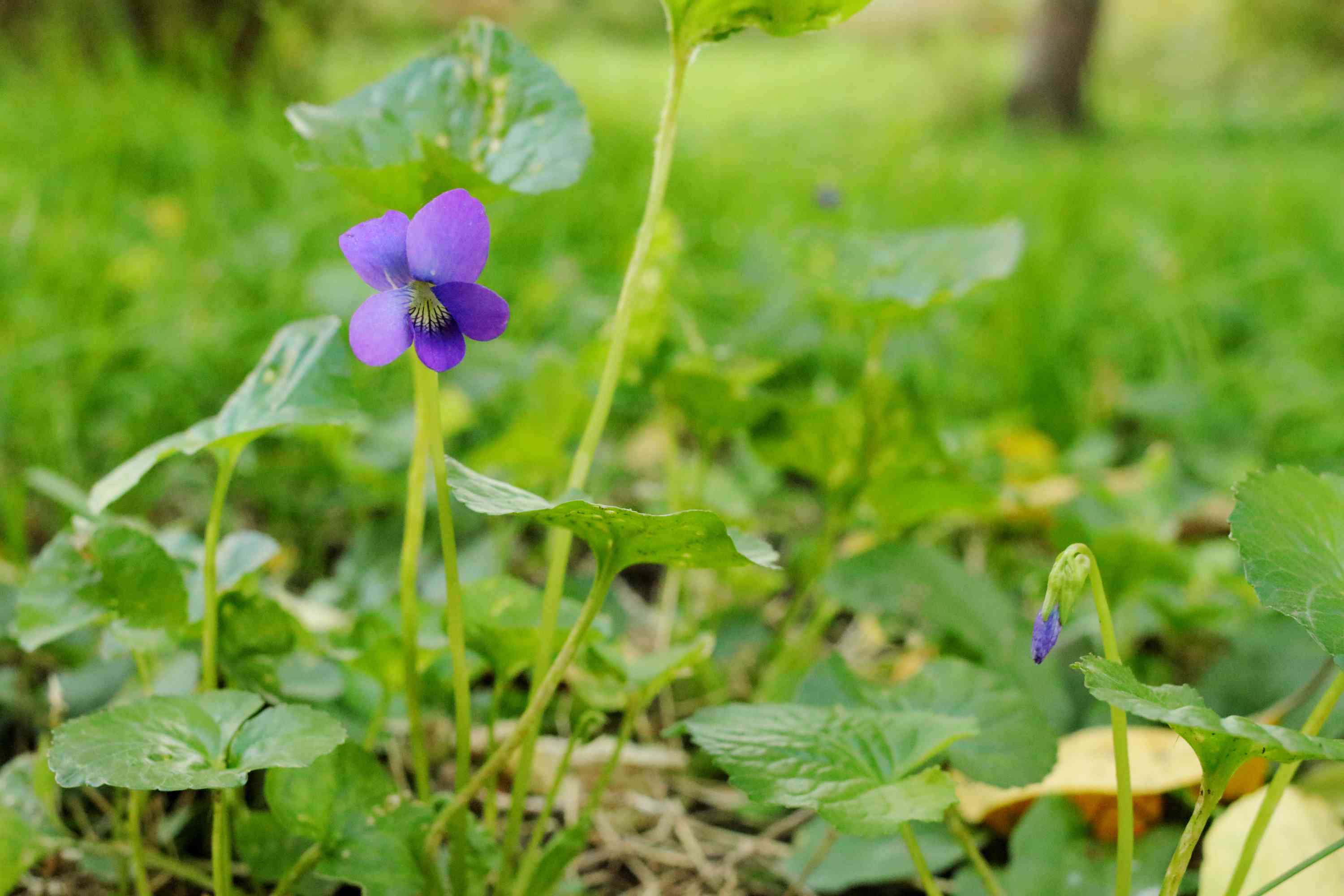Home>Gardening & Outdoor>Landscaping Ideas>What Kills Thistles In Grass


Landscaping Ideas
What Kills Thistles In Grass
Published: January 27, 2024
Discover effective landscaping ideas to eliminate thistles in your grass and restore the beauty of your lawn. Learn how to tackle this common issue with expert tips and techniques.
(Many of the links in this article redirect to a specific reviewed product. Your purchase of these products through affiliate links helps to generate commission for Storables.com, at no extra cost. Learn more)
Introduction
Welcome to the perennial battle against thistles in your lush green grass. These pesky intruders can turn a picturesque lawn into a prickly minefield, making barefoot walks a risky endeavor and marring the beauty of your outdoor space. But fear not, for there are effective ways to tackle these unwelcome guests and restore your lawn to its former glory.
In this comprehensive guide, we will delve into the world of thistles, gaining a deeper understanding of these resilient plants and exploring various methods to eradicate them from your grass. Whether you prefer environmentally friendly approaches, mechanical solutions, or targeted chemical treatments, we have you covered.
So, grab your gardening gloves and join us on a journey to reclaim your lawn from the clutches of thistles. With the right knowledge and strategies at your disposal, you can transform your outdoor oasis into a thistle-free haven for relaxation and recreation. Let's roll up our sleeves and dive into the fascinating world of thistle control.
Key Takeaways:
- Say goodbye to thistles in your grass by combining chemical, mechanical, and biological control methods for a lush, thistle-free lawn.
- Understand thistles’ resilience and life cycle to effectively combat them and create a vibrant, thistle-free outdoor oasis.
Read more: What Kills Torpedo Grass
Understanding Thistles
Before embarking on a mission to eliminate thistles from your grass, it’s essential to comprehend the nature of these resilient plants. Thistles belong to the Asteraceae family and encompass a diverse range of species, including the notorious Canada thistle and the imposing bull thistle. These plants are characterized by their prickly leaves, vibrant flowers, and robust taproots, which enable them to thrive in various environments.
Thistles are adept at spreading their seeds far and wide, thanks to the windborne nature of their fluffy pappus, aiding their proliferation across open fields, meadows, and lawns. Their aggressive growth habit and ability to outcompete desirable grass species make them a formidable adversary for homeowners and gardeners alike.
Understanding the life cycle of thistles is crucial for devising an effective eradication plan. These plants typically germinate in early spring, rapidly establishing their roots and foliage. As the season progresses, they produce striking purple or pink flowers, further perpetuating their presence through seed dispersal. Left unchecked, thistles can form dense patches, creating an eyesore within an otherwise pristine lawn.
Furthermore, the deep taproots of thistles enable them to withstand drought conditions and nutrient-poor soils, allowing them to persist in challenging environments. This resilience underscores the importance of employing targeted and persistent control measures to combat their tenacious grip on your grass.
By gaining insight into the biology and behavior of thistles, you can tailor your eradication efforts to effectively disrupt their life cycle and prevent their unchecked spread. Armed with this knowledge, you are better equipped to reclaim your lawn from the encroachment of these formidable adversaries.
Methods for Killing Thistles in Grass
When it comes to ridding your grass of thistles, a multifaceted approach is often the most effective strategy. By combining various methods, you can address thistle infestations comprehensively, mitigating their ability to rebound and reestablish in your lawn. Let’s explore some tried-and-true methods for eradicating thistles from your grass, ranging from chemical control to eco-friendly alternatives.
It’s important to note that the best approach may vary depending on the extent of the infestation, the specific thistle species present, and your personal preferences regarding lawn care practices. With that in mind, let’s delve into the diverse arsenal of thistle-killing methods at your disposal.
- Chemical Control: Utilizing selective herbicides designed to target broadleaf weeds, such as thistles, can be an efficient way to eradicate these intruders. Products containing active ingredients like 2,4-D or dicamba can effectively suppress thistle growth while minimizing harm to desirable grass species. It’s crucial to apply these herbicides judiciously, following label instructions and considering potential environmental impacts.
- Mechanical Control: For those inclined toward hands-on approaches, manual removal of thistles can yield positive results, especially for small-scale infestations. Using a sturdy garden trowel or weeding tool, carefully uproot thistles, ensuring that you extract the entire taproot to prevent regrowth. Regular mowing can also help disrupt thistle flowering and seed production, curbing their spread.
- Biological Control: Introducing natural predators or competitors of thistles can offer a sustainable, long-term solution. For instance, certain insects, such as the thistle-feeding weevil, can help suppress thistle populations by targeting their reproductive structures. Additionally, overseeding with competitive grass species can outcompete thistles, reducing their establishment and dominance in your lawn.
By combining these methods strategically, you can create a formidable defense against thistles, gradually reclaiming your grass and promoting a healthier, more resilient lawn ecosystem. With patience and persistence, you can tip the scales in favor of your desired grass species, restoring balance and beauty to your outdoor haven.
Chemical Control
Chemical control, through the targeted application of herbicides, offers an efficient and precise method for combating thistles in grass. Selective herbicides formulated to address broadleaf weeds, including thistles, can effectively curtail their growth while safeguarding desirable grass species. When implementing chemical control measures, it’s essential to prioritize safety, environmental responsibility, and adherence to product instructions.
Before applying herbicides, it’s advisable to identify the specific thistle species infesting your lawn, as different herbicides may vary in their efficacy against different types of thistles. Additionally, consider the stage of thistle growth, as younger plants may be more susceptible to herbicidal treatments compared to mature, well-established specimens.
Common active ingredients found in herbicides for thistle control include 2,4-D, dicamba, and clopyralid, each targeting the broadleaf characteristics of thistles while minimizing harm to grasses. These herbicides can be applied in various formulations, such as liquid concentrates or granular products, providing flexibility in application methods based on the size and scope of the infestation.
When applying herbicides, it’s crucial to adhere to label instructions regarding dilution ratios, application rates, and recommended timing. Carefully calibrating equipment and ensuring uniform coverage of the target area can maximize the effectiveness of the treatment while minimizing potential off-target impacts. Additionally, consider environmental factors such as wind speed, temperature, and precipitation forecasts to optimize herbicide application conditions and minimize unintended consequences.
Furthermore, exercising caution when using herbicides near water bodies or in proximity to sensitive vegetation is paramount to prevent ecological harm. Always follow local regulations and best management practices to mitigate the risk of herbicide drift or runoff, safeguarding the surrounding environment from unintended exposure.
By integrating chemical control measures judiciously and responsibly, you can significantly reduce thistle populations in your grass, creating a more conducive environment for the flourishing of desirable turf species. When complemented by other control methods and a proactive approach to lawn maintenance, chemical control can be a valuable tool in your arsenal against thistles.
To kill thistles in grass, use a selective herbicide labeled for thistle control. Apply in the spring or fall when thistles are actively growing for best results.
Mechanical Control
For those inclined toward hands-on approaches to thistle management, mechanical control methods offer a practical and environmentally friendly means of curbing thistle infestations in grass. By utilizing manual techniques and regular maintenance practices, you can effectively disrupt thistle growth and prevent their unchecked spread, fostering a healthier and more vibrant lawn.
One of the fundamental mechanical control methods involves the manual removal of thistles from the grass. Armed with a sturdy garden trowel or weeding tool, carefully uproot thistles, ensuring that you extract the entire taproot to prevent regrowth. This approach is particularly effective for targeting individual thistles or small clusters, allowing for precise intervention without the use of chemical treatments.
Regular mowing of the lawn can also play a pivotal role in managing thistles. By maintaining a consistent mowing schedule at an appropriate height, you can prevent thistles from reaching the flowering stage, thereby inhibiting seed production and dispersal. This proactive measure not only curtails thistle proliferation but also promotes the vigor and density of desirable grass species, reducing the available space and resources for thistle establishment.
Incorporating proper lawn care practices, such as adequate irrigation, fertilization, and aeration, can bolster the overall health and resilience of the grass, creating an environment less conducive to thistle colonization. By fostering robust turf growth and density, you can naturally outcompete thistles, diminishing their presence and impact on the lawn ecosystem.
Furthermore, promoting the establishment of competitive grass species through overseeding can bolster the lawn’s ability to resist thistle encroachment. Introducing grass varieties that thrive in your specific region and exhibit vigorous growth can enhance the turf’s ability to outcompete and suppress thistles, tipping the balance in favor of desirable vegetation.
By integrating these mechanical control methods into your lawn care routine, you can proactively manage thistle populations and foster a resilient, aesthetically pleasing grassy expanse. Embracing a holistic approach to lawn maintenance and leveraging the power of manual interventions can yield long-lasting results, transforming your outdoor space into a thistle-free haven for leisure and recreation.
Read more: What Kills Ants In Grass
Biological Control
Embracing a sustainable and ecologically conscious approach to thistle management, biological control methods offer a natural and long-term solution to curbing thistle infestations in grass. By harnessing the power of biological agents and ecological interactions, you can effectively suppress thistle populations while minimizing the reliance on chemical treatments, fostering a harmonious lawn ecosystem.
One notable avenue for biological control involves the introduction of natural predators or herbivores that target thistles. For instance, the thistle-feeding weevil (Rhinocyllus conicus) has demonstrated an appetite for various thistle species, particularly the musk thistle (Carduus nutans). By releasing these specialized herbivores into thistle-infested areas, you can leverage their feeding activity to reduce thistle vigor and reproductive capacity, ultimately diminishing their prevalence in the grass.
Furthermore, certain fungal pathogens, such as Puccinia carduorum, exhibit a host-specificity for thistles, offering a potential biocontrol option. These natural antagonists can infect thistle plants, impeding their growth and vitality without posing significant risks to non-target vegetation. Implementing biocontrol agents with a proven track record of efficacy and safety can contribute to a balanced and resilient lawn ecosystem, where thistles are kept in check by natural ecological processes.
Another facet of biological control involves leveraging the competitive dynamics within the grass community to suppress thistle establishment. By overseeding with aggressive and competitive grass species that thrive in your specific region, you can bolster the turf’s ability to outcompete thistles for resources and space, creating an inhospitable environment for thistle colonization.
It’s important to note that biological control methods require a thorough understanding of the local ecosystem and the potential impacts on non-target species. Prior to implementing biocontrol measures, it’s advisable to consult with local agricultural extension services or ecological experts to ensure that the chosen approach aligns with best management practices and environmental stewardship.
By embracing biological control strategies as part of your thistle management plan, you can foster a balanced and resilient lawn ecosystem, where natural ecological processes work in harmony to suppress thistles and promote the flourishing of desirable grass species. This sustainable approach aligns with the principles of environmental responsibility and long-term lawn health, offering a compelling alternative to conventional chemical treatments.
Conclusion
As we conclude our exploration of thistle control in grass, it’s evident that addressing thistle infestations requires a multifaceted approach that integrates various control methods tailored to the specific needs of your lawn. By gaining a deeper understanding of thistles and their resilient nature, you can devise a comprehensive strategy to reclaim your grass from these persistent intruders.
Whether you opt for chemical control to target thistles with precision, embrace mechanical interventions to disrupt their growth, or explore the realm of biological control to foster a harmonious lawn ecosystem, the key lies in proactive and persistent management. Each method offers unique advantages and considerations, empowering you to choose the approach that aligns with your environmental ethos and lawn care philosophy.
It’s essential to approach thistle control with a long-term perspective, recognizing that sustained efforts and vigilance are necessary to prevent thistle resurgence and promote the flourishing of desirable grass species. By integrating control methods judiciously, you can gradually tip the balance in favor of a thistle-free, vibrant lawn that serves as a welcoming retreat for leisure and recreation.
Furthermore, proactive lawn maintenance practices, such as regular mowing, proper irrigation, and strategic overseeding, can fortify your grass against thistle encroachment, creating an environment where desirable turf species thrive and thistles struggle to gain a foothold. By nurturing a resilient and healthy lawn ecosystem, you can minimize the vulnerability of your grass to thistle colonization, fostering a visually appealing and functional outdoor space.
Ultimately, the battle against thistles in grass is a testament to the resilience and dedication of homeowners and gardeners in preserving the beauty and vitality of their outdoor havens. With the right knowledge, tools, and a touch of perseverance, you can transform your grass into a thistle-free sanctuary, where the lush green expanse invites relaxation and enjoyment for all who tread upon it.
So, as you embark on your thistle control journey, remember that each intervention, whether chemical, mechanical, or biological, contributes to the collective effort in reclaiming your lawn from the clutches of thistles. With a steadfast commitment to responsible lawn care and a keen eye on long-term sustainability, you can triumph over thistles and cultivate a flourishing grassland that beckons with its natural allure and inviting charm.
Frequently Asked Questions about What Kills Thistles In Grass
Was this page helpful?
At Storables.com, we guarantee accurate and reliable information. Our content, validated by Expert Board Contributors, is crafted following stringent Editorial Policies. We're committed to providing you with well-researched, expert-backed insights for all your informational needs.















0 thoughts on “What Kills Thistles In Grass”